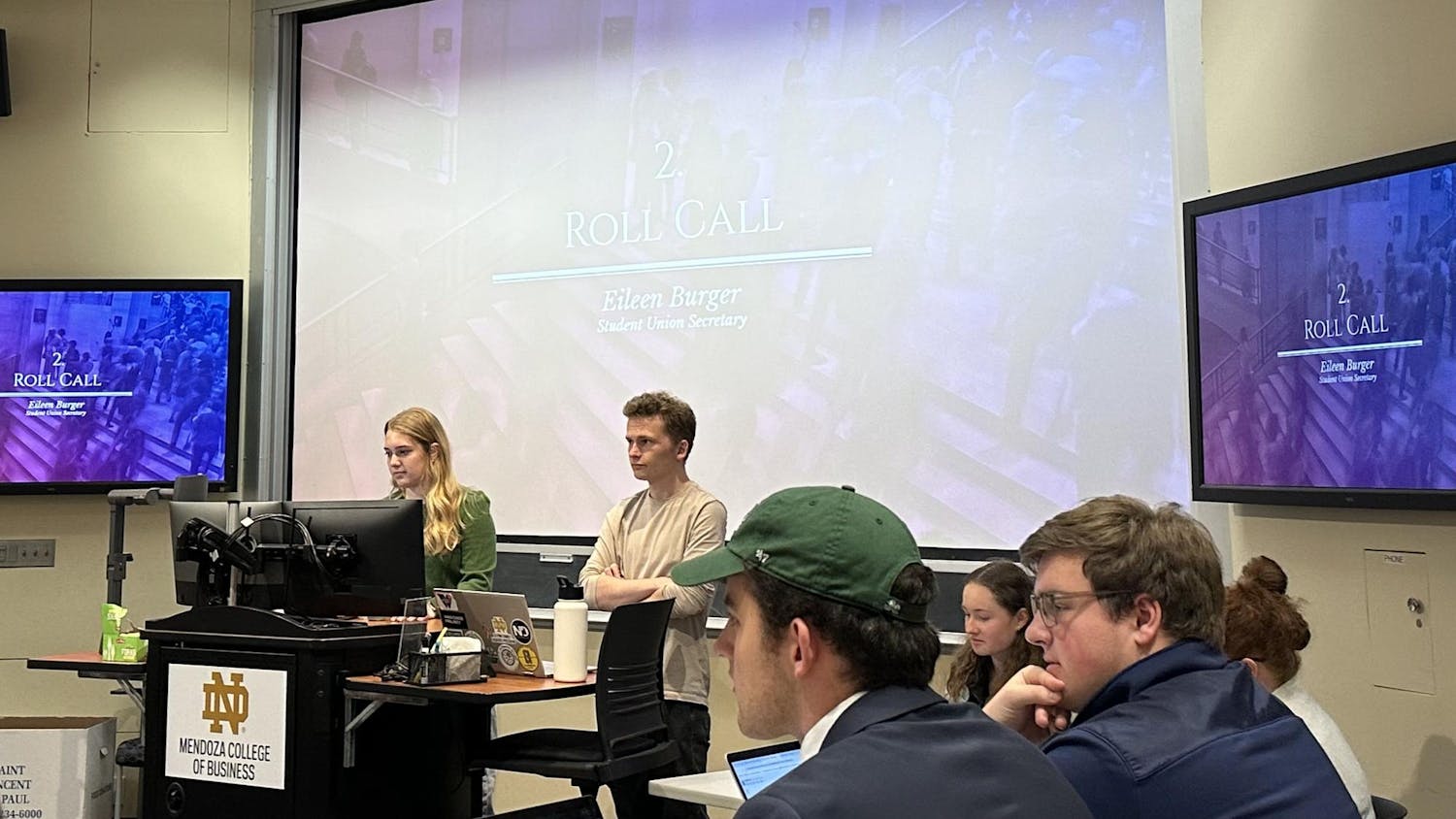One of the most influential presidents at Saint Mary's, Sr. Madeleva Wolff, was known for hand-carving wooden walking sticks.
President Jan Cervelli has been keen on bringing back Wolff's legacy with the reintroduction of Sr. Madeleva’s walking stick. She said the walking stick will be a symbol of all that Saint Mary’s has to offer.
“Sr. Madeleva’s walking stick will now be a part of our official ceremonies, serving as a symbol of Saint Mary’s highest ideals, established and still modeled by the Sisters of the Holy Cross,” she said.
Joseph Incandela, associate dean of faculty, said President Cervelli initiated the use of the walking stick.
“President Cervelli made the decision to use it,” he said. “Once she made the decision to use it, what I did was bring over five walking sticks … and she chose Sr. Madeleva’s favorite.”
The walking stick is used in place of a traditional college mace, Incandela said. A mace is a stylized, ceremonial club used by most colleges to begin processions where the president of the college is involved.
“A women's college could do better than having a mace, because the symbol is male and kind of violent,” he said.
The walking stick is a better symbol for Saint Mary’s, Incandela said. The walking stick itself has come to symbolize both past, present and future of the College.
“Really, [the mace] is a way to present authority with an implied threat,” he said. “That is something we don’t want, along with a symbol from the College’s past, that is sort of on the opposite end of the spectrum, and much more humble this notion of promising discovery and then having a walking stick which is the kind of thing that people use when they explore, so to the extent that the president is there to lead exactly that, it seemed a much more appropriate symbol.
“Then when you add in all the other parts, it was part of our past, with Sr. Madeleva, and the particular stick, the actual stick, the actual hawthorn tree, was cut from a tree on campus and this whole idea was that she saw this branch or stump of a tree, she thought wasn't gonna survive and so she repurposed it and used it for useful end.”
The metaphor goes even further, Incandela said, with various associations, including a theory that the thorns on the hawthorn tree were used for Christ’s crown of thorns and is associated with Mary.
Ceremonial maces are only used in official college ceremonies, Incandela said — most specifically, presidential inaugurations.
“Usually, where I would say it would be used, is in official college ceremonies at which the president resides, appropriate matriculations, honors convocation, commencement and inauguration — it will probably be a part of that,” he said. “For inaugurations, the custom is the mace would precede the outgoing president, but on the way out it precedes the newly-installed president.”
Incandela said he hopes the walking stick remains a part of the College’s future. While Cervelli did choose to utilize the walking stick as a mace, the walking stick is not entirely hers — it’s everyone's.
“I hope it’s a symbol that lasts,” he said. “I hope it’s part of the College’s history. Nothing I’ve said is unique to President Cervelli, in terms of the symbolism and the ties to the Catholic heritage for President Cervelli, the fact that she is a landscape architect and that she has made sustainability a significant part of what she wants to emphasize, it’s all the more appropriate, these things unique to her that make this symbol appropriate. Most of what it’s about, [however], goes beyond President Cervelli.”
Students can get involved and view several of Sr. Madeleva’s walking sticks in the archives at Madeleva Memorial. The actual ceremonial walking stick resides in President Cervelli’s office in Le Mans Hall. Finally, students can take it a step further and view the actual trees where Sr. Madeleva took her branch for the walking stick from, as hawthorn trees are still on campus. Grounds manager Mark Kubacki, trained by the grounds manager hired by Sr. Madeleva, said that two hawthorn trees remain on Saint Mary’s campus.
“[The trees are] east of Regina Hall between the building and the sidewalk, and also west of the Cushwa-Leighton Library,” he said.
At the annual forum address, Cervelli said she hopes the stick comes to symbolize all of Saint Mary’s, past, present and future.
“Stepping into the unknown can be as scary as it is exciting,” she said. “But I hope that Sr. Madeleva’s walking stick will be a connection to our past that supports us all as we strive to build a future worthy of what we’ve inherited. It’s not a crutch, it’s a guide. I know I’ll be leaning on it, and on all of you, as we step off into a new academic year.”













